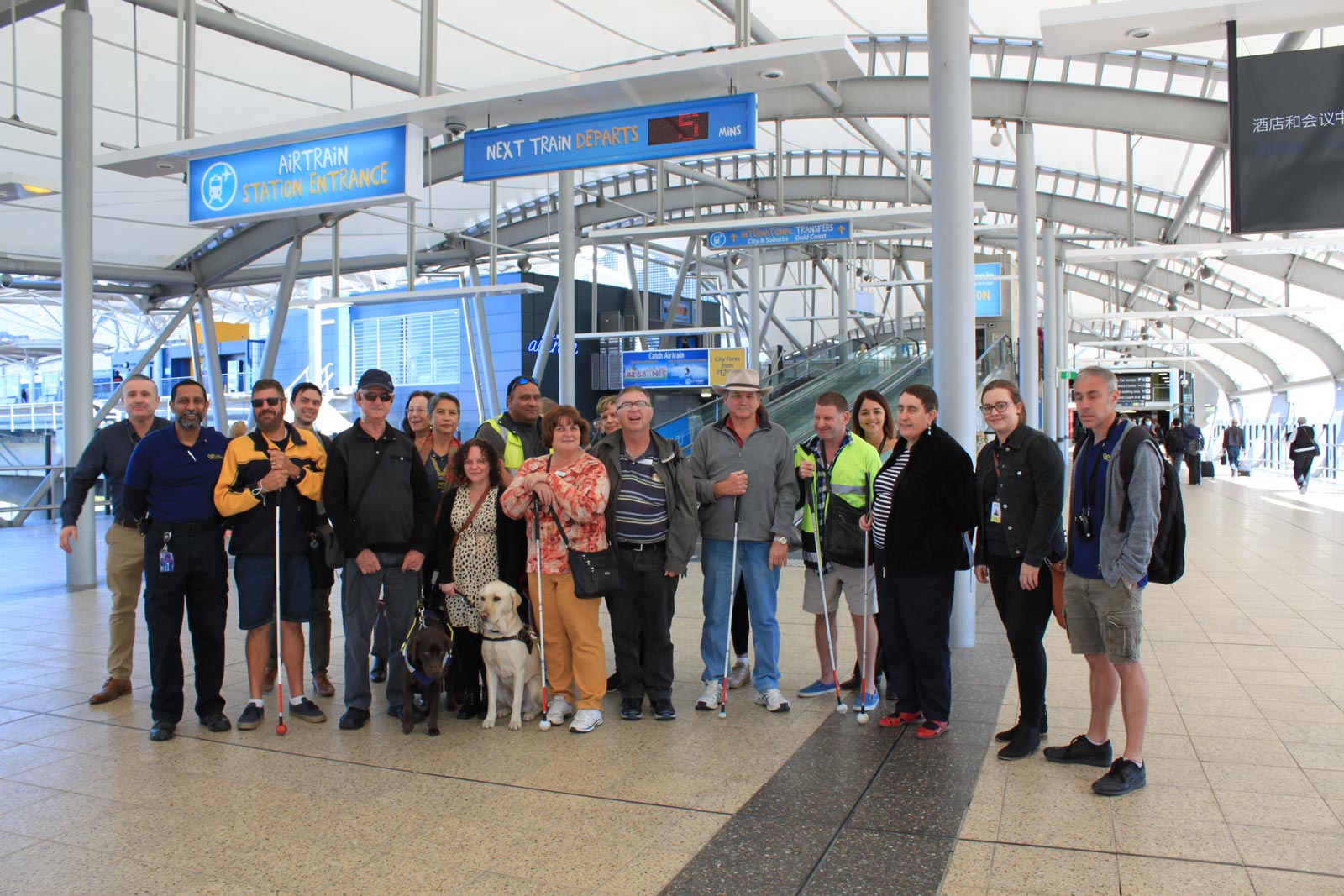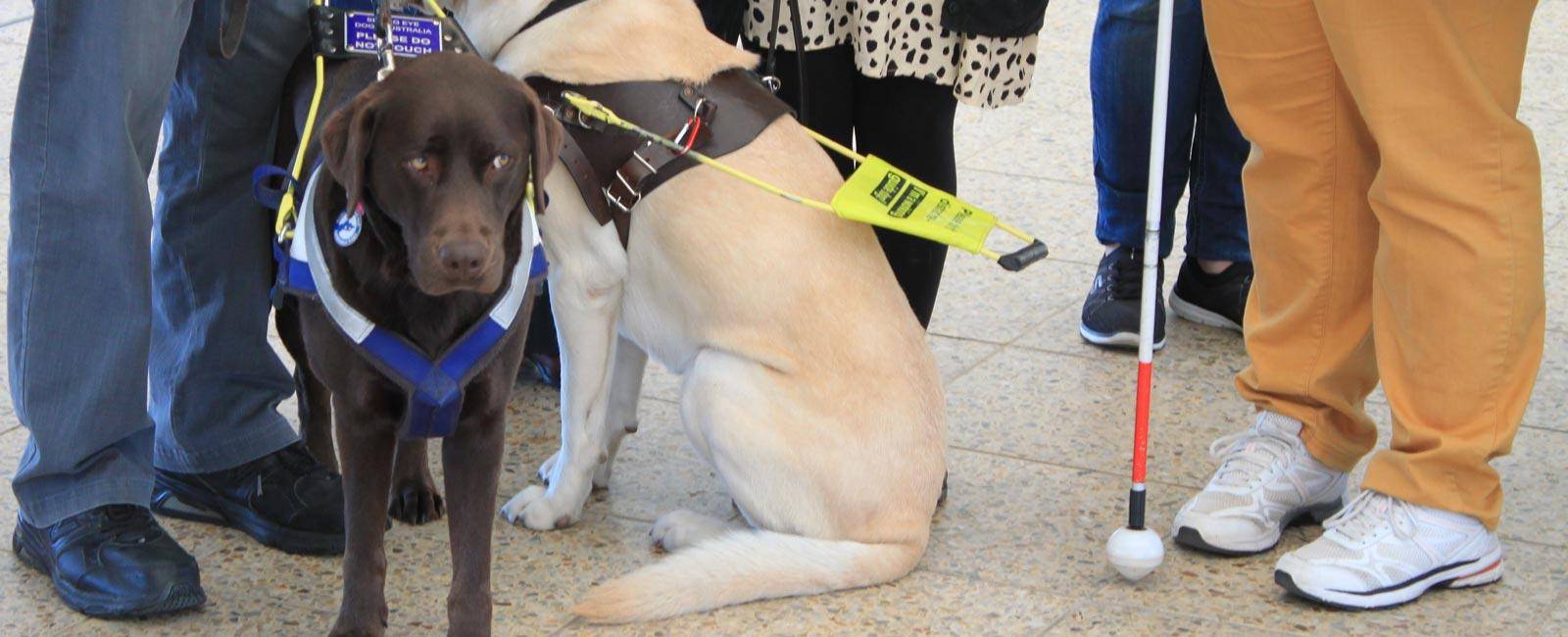
Navigating the airport environment is something some people find stressful and confronting. The strict time frames for check-in and boarding, knowing the ins and outs of the security screening process, and trying to navigate the hustle and bustle of the crowds is enough to induce panic and anxiety within the most seasoned of travellers.
Now close your eyes and imagine trying to do it blindfolded.
Imagine finding your way from the train station to the check-in desks using only the sound of traffic at your back, the direction and feel of the tactile paving, and the sound of suitcases rolling and bumping over the pavement. Imagine making your way from security screening to your departure gate using only the smell of freshly ground coffee beans, the feeling of warmth on the left-hand side of your body, and the clicking of your tongue onto the roof of your mouth to identify objects around and in front of you.
It’s hard to imagine, right?
Removing the things we take for granted through vision, including maps and signage, would make it hazardous and almost impossible, yet that’s exactly what thousands of Australians with blindness or low vision do every day.
Leading blindness and low vision service provider Vision Australia and Brisbane Airport Corporation facilitate regular Travel Days at Brisbane Airport’s domestic and international terminals, opening up the world of travel to Australians who are blind or have low vision.
Vision Australia clients who take part in one of the Travel Days are given the opportunity to familiarise themselves with the airport and its processes within a safe and supportive environment. They work with Vision Australia’s Orientation and Mobility Specialist Bashir Ebrahim OAM and Brisbane Airport Travel Coordinator Keith McCullagh to develop strategies for successfully navigating the airport.
I tagged along on one of the Travel Days at the Domestic Terminal, and I have to say, the experience was incredibly humbling and educational. Normally, I would have been blindfolded to be given a more authentic experience as a vision-impaired visitor, but Bashir didn’t have one on hand and was extremely apologetic. I’ll be honest – I was kind of glad. I am known to be as sure-footed as a baby giraffe, so taking my sight away would have made things exponentially hazardous for all involved.
As we moved through the terminal, Keith and Bashir pointed out an array of design elements that I had never really noticed before. I was aware of the Tactile Ground Surface Indicators (TGSIs), but I had never appreciated the very deliberate design elements of the way-finding signage in the forecourt and around the public areas – big bright colours, over-sized numbers and braille were used throughout, and even some areas featured hearing augmentation signage.
I remember being left in awe as I walked alongside the participants, seeing them use their own unique ways to move safely around the terminal. At one point, I was entirely convinced that I was being punked after seeing one young man correctly identify when someone was standing a metre in front of him purely by tongue clicking. It turns out he was able to master the art of human echolocation in a matter of weeks, and alongside the use of a long cane, he can independently make his way around any public area without the need for assistance. Respect. These clients are phenomenal!
I spoke with Vision Australia client Errol O’Malley, who uses a Seeing Eye Dog to help him navigate in public. He has been on three Travel Days at BNE and is incredibly thankful for them as they give him the confidence to travel independently.
“Travelling to an airport on your own, the biggest challenge is literally ‘where am I?’. I just love these days as you learn all of the different corridors, the sounds of the baggage carousel and the announcements at the Virgin end and Qantas end.”
“It is one of those things you could do every six months as things change at the airport, and you can always pick up new skills.”
Errol asked me to make sure the Travel Days are never stopped. Having seen one of these incredible tours firsthand, I was able to confidently reassure him they are here to stay. After all, they are one of many ways BAC is committed to building Australia’s most accessible airport, and the future of accessibility at BNE is looking extremely bright.

